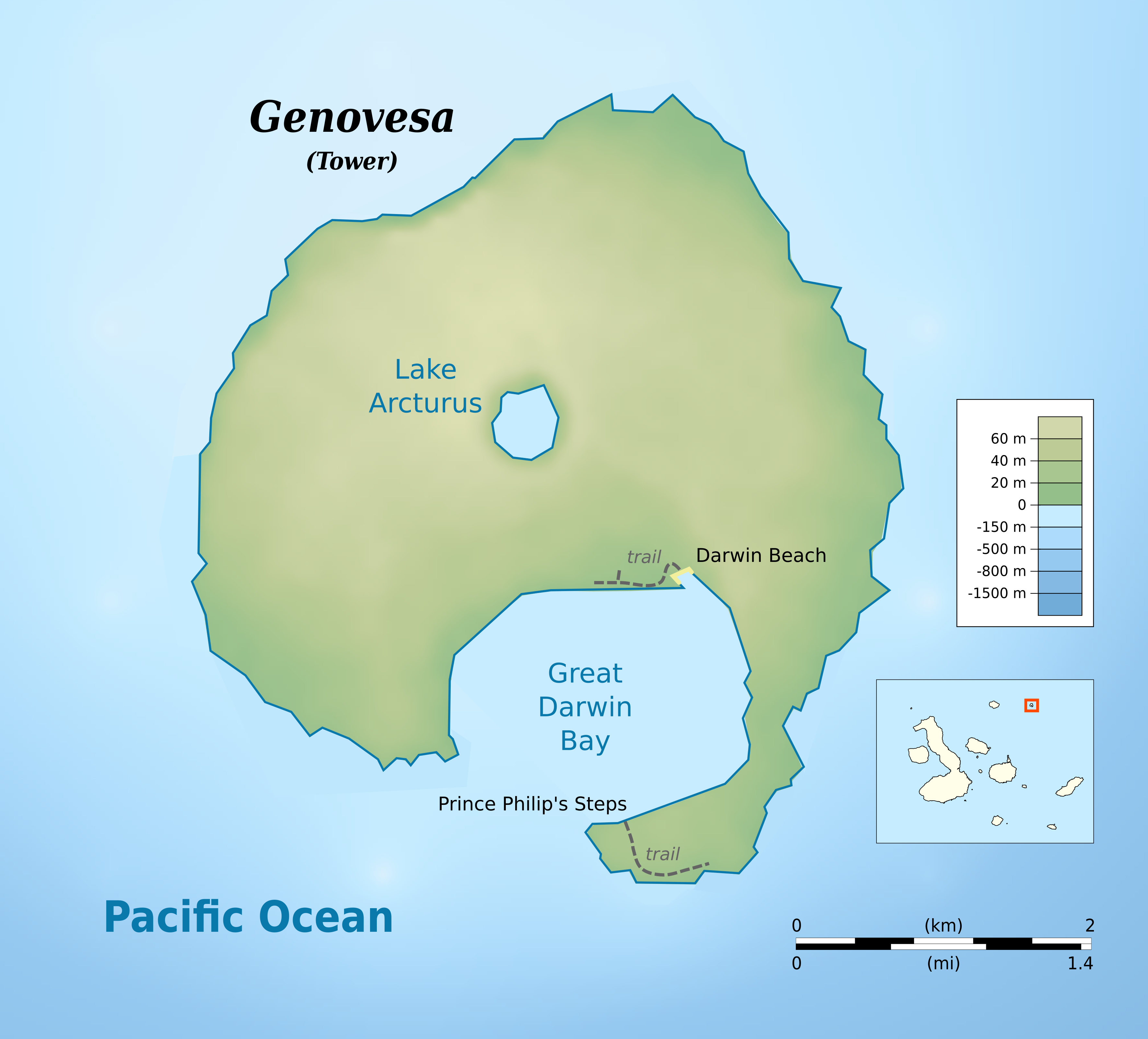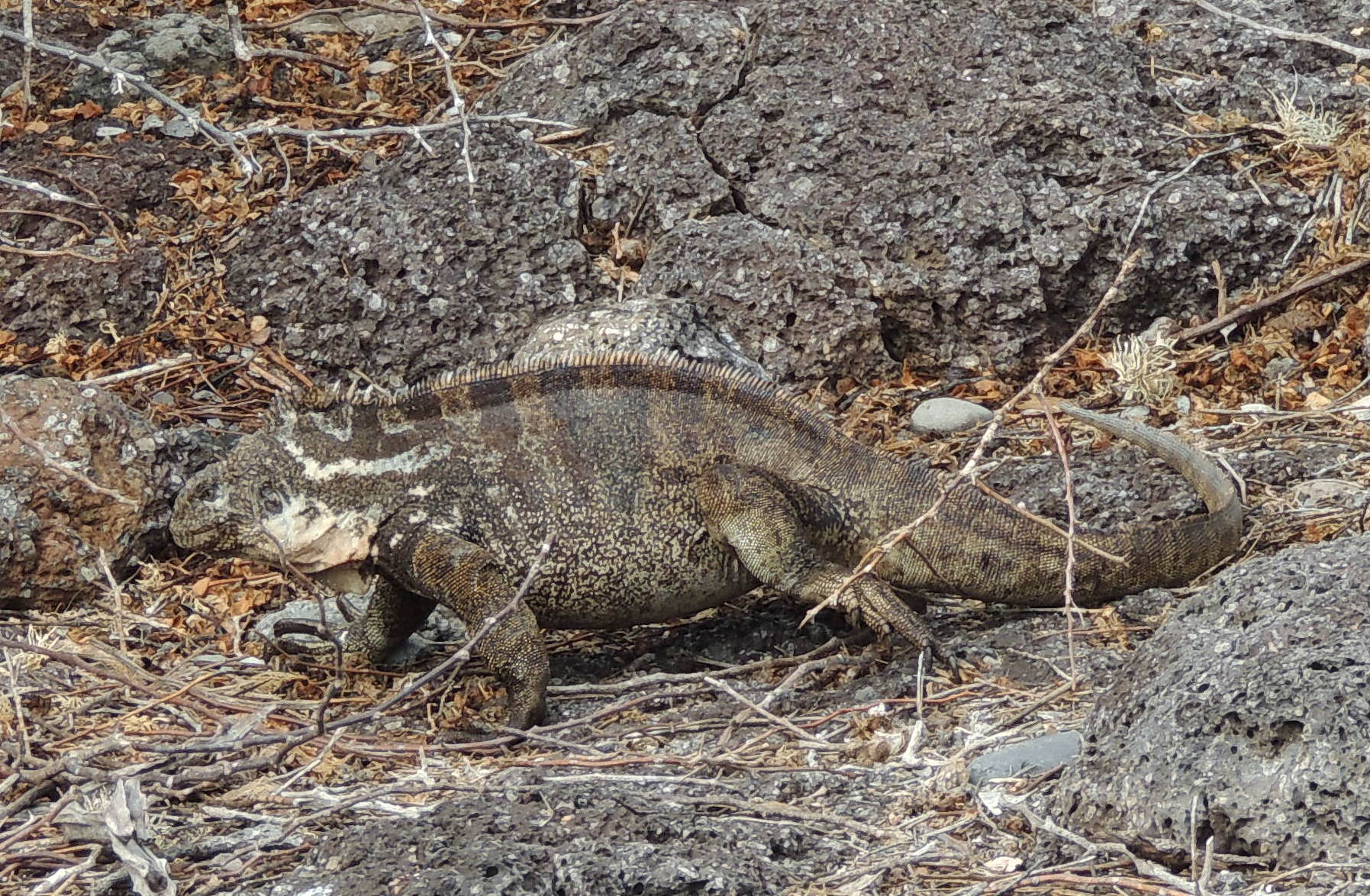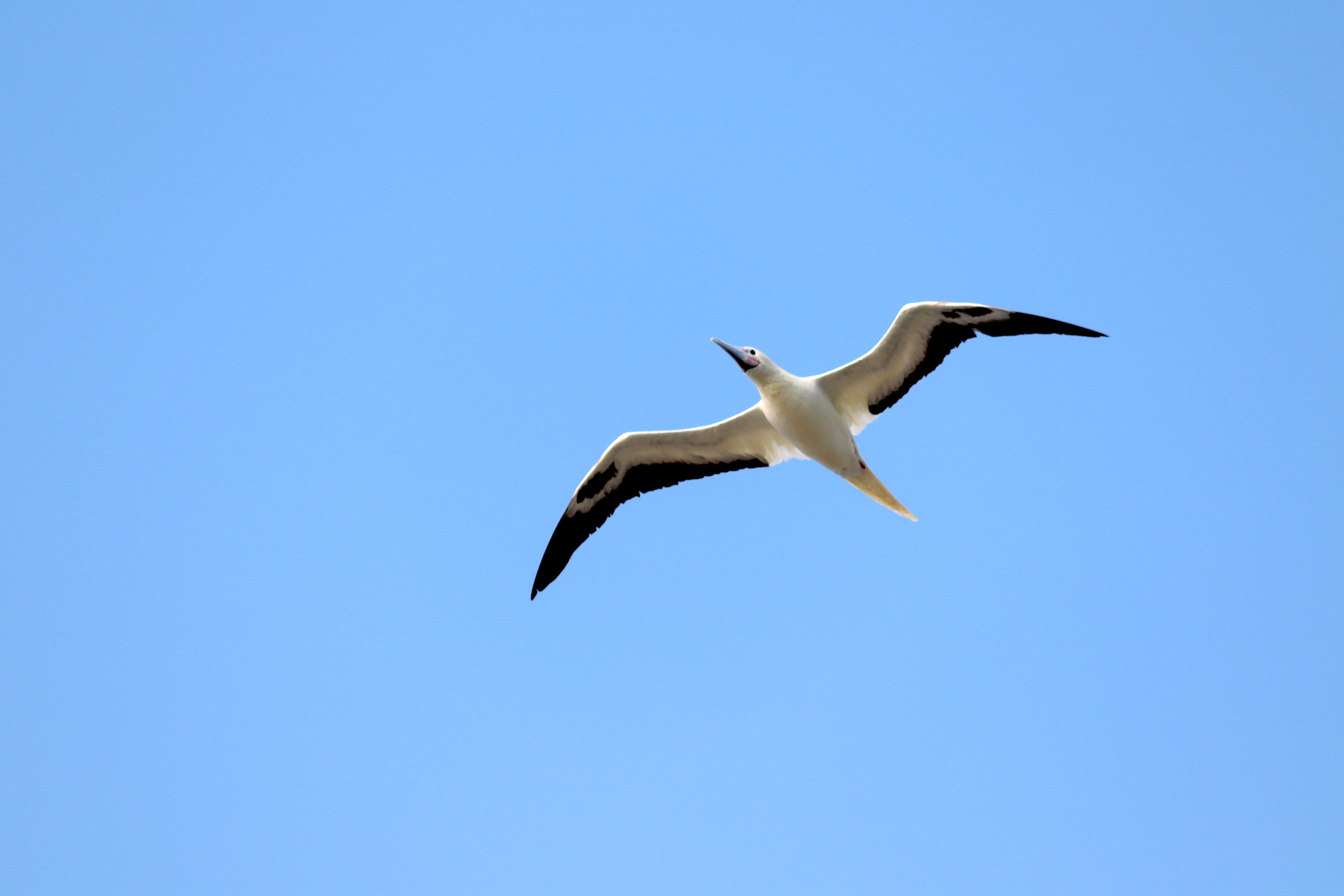|
Genovesa Island
Genovesa Island (Spanish: ''Isla Genovesa''), referred to in English as Tower Island, is a shield volcano in the Galápagos Islands in the eastern Pacific Ocean. The island occupies about , and its maximum elevation is . The horse-shoe shaped island has a volcanic caldera whose wall has collapsed, forming the Great Darwin Bay, surrounded by cliffs. Lake Arcturus, filled with salt water, lies in the centre, and sediment within this crater lake is less than 6,000 years old. Although no historical eruptions are known from Genovesa, there are very young lava flows on the flanks of the volcano. The official Spanish name "Genovesa" is from the Italian city of Genoa, in honor of Christopher Columbus. The English name "Tower" is presumably a corruption of "Downes". The island's position was reported by John Downes of the USS ''Essex'' in 1813, during the War of 1812, and the name "Dowers's" appeared in 1815, presumably a misspelled reference to Downes. After passing through "Do ... [...More Info...] [...Related Items...] OR: [Wikipedia] [Google] [Baidu] |
Galápagos Islands
The Galápagos Islands (Spanish: , , ) are an archipelago of volcanic islands. They are distributed on each side of the equator in the Pacific Ocean, surrounding the centre of the Western Hemisphere, and are part of the Republic of Ecuador. Located west of continental Ecuador, the islands are known for their large number of endemic species that were studied by Charles Darwin during the second voyage of HMS ''Beagle''. His observations and collections contributed to the inception of Darwin's theory of evolution by means of natural selection. The Galápagos Islands and their surrounding waters form the Galápagos Province of Ecuador, the Galápagos National Park, and the Galápagos Marine Reserve. The principal language on the islands is Spanish. The islands have a population of slightly over 25,000. The first recorded visit to the islands happened by chance in 1535, when Fray Tomás de Berlanga, the Bishop of Panamá, was surprised to find this undiscovered land on a vo ... [...More Info...] [...Related Items...] OR: [Wikipedia] [Google] [Baidu] |
John Downes (naval Officer)
Commodore John Downes (December 23, 1784August 11, 1854) was an officer in the United States Navy, whose service covered the first half of the 19th century. Early life and career John Downes was born in Canton, Massachusetts on December 23, 1784. He served as acting midshipman from September 9, 1800, and was appointed midshipman June 1, 1802. He rendered distinguished service during the First Barbary War in 1804 in the frigate , and distinguished himself again while a midshipman on the frigate '' New York'' in a boat attack upon Tripolitan feluccas. In March 1807, he was made a lieutenant, and served as executive officer for Captain David Porter in during her cruise in the Pacific in the War of 1812. In the action off James Island, Downes was in command of the sloop ''Georgiana'' during the capture of three British whalers. He also participated in the action off Charles Island before sailing to Nuku Hiva to assist in building America's first military base in the Pacific. Amon ... [...More Info...] [...Related Items...] OR: [Wikipedia] [Google] [Baidu] |
Marine Iguana
The marine iguana (''Amblyrhynchus cristatus''), also known as the sea iguana, saltwater iguana, or Galápagos marine iguana, is a species of iguana found only on the Galápagos Islands (Ecuador). Unique among modern lizards, it is a marine reptile that has the ability to forage in the sea for algae, which makes up almost all of its diet. Marine iguanas are the only extant lizard that spends time in a marine environment. Large males are able to dive to find this food source, while females and smaller males feed during low tide in the intertidal zone. They mainly live in colonies on rocky shores where they bask after visiting the relatively cold water or intertidal zone, but can also be seen in marshes, mangrove swamps and beaches. Large males defend territories for a short period, but smaller males have other breeding strategies. After mating, the female digs a nest hole in the soil where she lays her eggs, leaving them to hatch on their own a few months later. Marine iguanas vary ... [...More Info...] [...Related Items...] OR: [Wikipedia] [Google] [Baidu] |
Seabird
Seabirds (also known as marine birds) are birds that are adapted to life within the marine environment. While seabirds vary greatly in lifestyle, behaviour and physiology, they often exhibit striking convergent evolution, as the same environmental problems and feeding niches have resulted in similar adaptations. The first seabirds evolved in the Cretaceous period, and modern seabird families emerged in the Paleogene. In general, seabirds live longer, breed later and have fewer young than other birds do, but they invest a great deal of time in their young. Most species nest in colonies, which can vary in size from a few dozen birds to millions. Many species are famous for undertaking long annual migrations, crossing the equator or circumnavigating the Earth in some cases. They feed both at the ocean's surface and below it, and even feed on each other. Seabirds can be highly pelagic, coastal, or in some cases spend a part of the year away from the sea entirely. Seabirds and ... [...More Info...] [...Related Items...] OR: [Wikipedia] [Google] [Baidu] |
Galápagos Mockingbird
The Galápagos mockingbird (''Mimus parvulus'') is a species of bird in the family Mimidae. It is endemic to the Galápagos Islands, Ecuador. Systematics The Galápagos mockingbird is one of four mockingbird species endemic to the Galápagos Islands. These four are all closely related, and DNA evidence shows they likely all descended from an ancestor species which reached the islands in a single colonization event. When John Gould first described the species in 1837, based on specimens brought back from the islands by Charles Darwin, he named it ''Orpheus parvulus''. However, because of the rules of binomial nomenclature, ''Orpheus'' was declared a junior synonym, and in 1841, George Robert Gray moved all of the ''Orpheus'' mockingbirds to the older genus ''Mimus''. In 1890, Robert Ridgway created the genus ''Nesomimus'' for the mockingbirds found on the Galápagos Islands, and most taxonomists adopted the change. Recent DNA studies, however, show that the ''Nesomimus'' mockingbi ... [...More Info...] [...Related Items...] OR: [Wikipedia] [Google] [Baidu] |
Darwin's Finches
Darwin's finches (also known as the Galápagos finches) are a group of about 18 species of passerine birds. They are well known for their remarkable diversity in beak form and function. They are often classified as the subfamily Geospizinae or tribe Geospizini. They belong to the tanager family and are not closely related to the true finches. The closest known relative of the Galápagos finches is the South American '' Tiaris obscurus''. They were first collected when the second voyage of the ''Beagle'' visited the Galápagos Islands, with Charles Darwin on board as a gentleman naturalist. Apart from the Cocos finch, which is from Cocos Island, the others are found only on the Galápagos Islands. The term "Darwin's finches" was first applied by Percy Lowe in 1936, and popularised in 1947 by David Lack in his book ''Darwin's Finches''. Lack based his analysis on the large collection of museum specimens collected by the 1905–06 Galápagos expedition of the California Academy ... [...More Info...] [...Related Items...] OR: [Wikipedia] [Google] [Baidu] |
Tropicbird
Tropicbirds are a family, Phaethontidae, of tropical pelagic seabirds. They are the sole living representatives of the order Phaethontiformes. For many years they were considered part of the Pelecaniformes, but genetics indicates they are most closely related to the Eurypygiformes. There are three species in one genus, ''Phaethon''. The scientific names are derived from Ancient Greek ''phaethon'', "sun". They have predominantly white plumage with elongated tail feathers and small feeble legs and feet. Taxonomy, systematics and evolution The genus ''Phaethon'' was introduced in 1758 by the Swedish naturalist Carl Linnaeus in 1758 in the tenth edition of his ''Systema Naturae''. The name is from Ancient Greek ''phaethōn'' meaning "sun". The type species was designated as the red-billed tropicbird (''Phaethon aethereus'') by George Robert Gray in 1840. Tropicbirds were traditionally grouped in the order Pelecaniformes, which contained the pelicans, cormorants and shags, darters, ... [...More Info...] [...Related Items...] OR: [Wikipedia] [Google] [Baidu] |
Storm Petrel
Storm-petrel may refer to one of two bird families, both in the order Procellariiformes, once treated as the same family. The two families are: *Northern storm petrels (''Hydrobatidae'') are found in the Northern Hemisphere, although some species around the Equator dip into the south. * Southern storm-petrels (Oceanitidae) are found in all oceans, although only white-faced storm petrel The white-faced storm petrel (''Pelagodroma marina''), also known as white-faced petrel is a small seabird of the austral storm petrel family Oceanitidae. It is the only member of the monotypic genus ''Pelagodroma''. Description The white-faced ... (breeding in the North Atlantic, in addition to the Southern Ocean) and Wilson's Storm-petrels (on migration) are found in the Northern Hemisphere. {{SIA Set index articles on animal common names ... [...More Info...] [...Related Items...] OR: [Wikipedia] [Google] [Baidu] |
Swallow-tailed Gull
The swallow-tailed gull (''Creagrus furcatus'') is an equatorial seabird in the gull family, Laridae. It is the only species in the genus ''Creagrus'', which derives from the Latin ''Creagra'' and the Greek ''kreourgos'' which means butcher, also from ''kreas'', meat; according to Jobling it would mean "hook for meat" referring to the hooked bill of this species. It was first described by French naturalist and surgeon Adolphe-Simon Neboux in 1846. Its scientific name is originally derived from the Greek word for gull, "Glaros" and via Latin ''Larus'', "gull" and ''furca'' "two-tined fork". It spends most of its life flying and hunting over the open ocean. The main breeding location is in the Galápagos Islands, particularly the rocky shores and cliffs of Hood, Tower and Wolf Islands, with lower numbers on most of the other islands. It is more common on the eastern islands where the water is warmer. It is the only fully nocturnal gull and seabird in the world, preying on squid a ... [...More Info...] [...Related Items...] OR: [Wikipedia] [Google] [Baidu] |
Nazca Booby
The Nazca booby (''Sula granti'') is a large seabird of the booby family, Sulidae, native to the eastern Pacific. First described by Walter Rothschild, 2nd Baron Rothschild, Walter Rothschild in 1902, it was long considered a subspecies of the masked booby until recognised as distinct genetically and behaviorally in 2002. It has a typical sulid body shape, with a long pointed orange-yellow bill, long neck, aerodynamic body, long slender wings and pointed tail. The adult is bright white with black and white wings, a black tail and a dark face mask. Taxonomy Walter Rothschild, 2nd Baron Rothschild, Walter Rothschild organised and sent an expedition to the Galapagos Islands in 1897 to collect and review the animal life there. He wrote of a distinctive booby there, which he and William Robert Ogilvie-Grant diagnosed as the Peruvian booby (''Sula variegata''), then only known from juvenile plumage. Later, in 1902, Rothschild named it a new species, ''Sula granti''. Rothschild later re ... [...More Info...] [...Related Items...] OR: [Wikipedia] [Google] [Baidu] |
Red-footed Booby
The red-footed booby (''Sula sula'') is a large seabird of the booby family, Sulidae. Adults always have red feet, but the colour of the plumage varies. They are powerful and agile fliers, but they are clumsy in takeoffs and landings. They are found widely in the tropics, and breed colonially in coastal regions, especially islands. The species faces few natural or man-made threats, although its population is declining; it is considered to be a least-concern species by the International Union for Conservation of Nature (IUCN). Taxonomy The first formal description of the red-footed booby was by the Swedish naturalist Carl Linnaeus in 1766 in the twelfth edition of his ''Systema Naturae''. He introduced the binomial name ''Pelecanus sula''. The type locality is Barbados in the West Indies. The present genus ''Sula'' was introduced by the French scientist Mathurin Jacques Brisson in 1760. The word ''Sula'' is Norwegian for a gannet. There are three subspecies: * ''S. s. sula'' ... [...More Info...] [...Related Items...] OR: [Wikipedia] [Google] [Baidu] |
Frigatebirds
Frigatebirds are a family of seabirds called Fregatidae which are found across all tropical and subtropical oceans. The five extant species are classified in a single genus, ''Fregata''. All have predominantly black plumage, long, deeply forked tails and long hooked bills. Females have white underbellies and males have a distinctive red gular pouch, which they inflate during the breeding season to attract females. Their wings are long and pointed and can span up to , the largest wing area to body weight ratio of any bird. Able to soar for weeks on wind currents, frigatebirds spend most of the day in flight hunting for food, and roost on trees or cliffs at night. Their main prey are fish and squid, caught when chased to the water surface by large predators such as tuna. Frigatebirds are referred to as kleptoparasites as they occasionally rob other seabirds for food, and are known to snatch seabird chicks from the nest. Seasonally monogamous, frigatebirds nest colonially. A roug ... [...More Info...] [...Related Items...] OR: [Wikipedia] [Google] [Baidu] |







